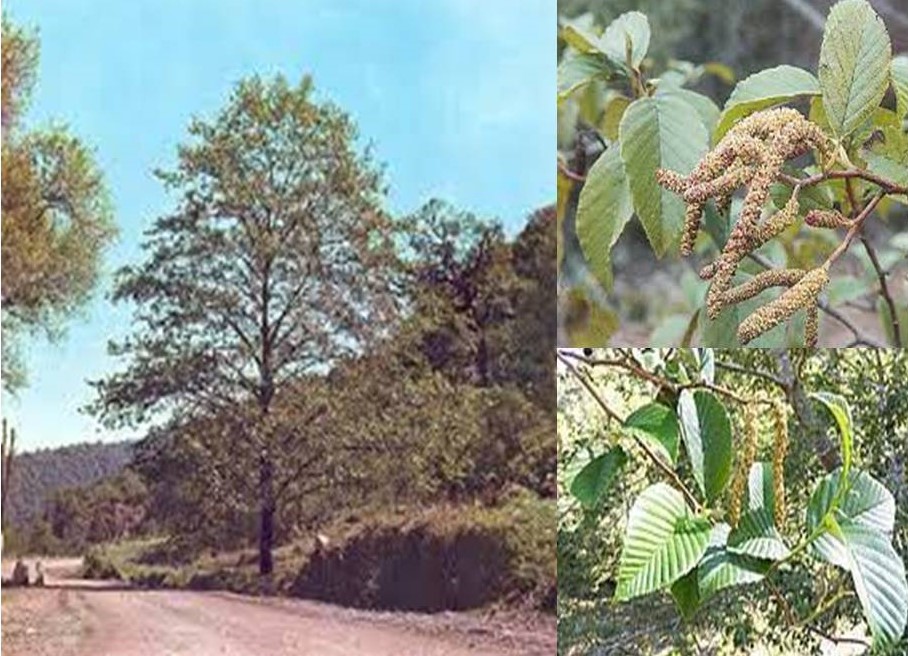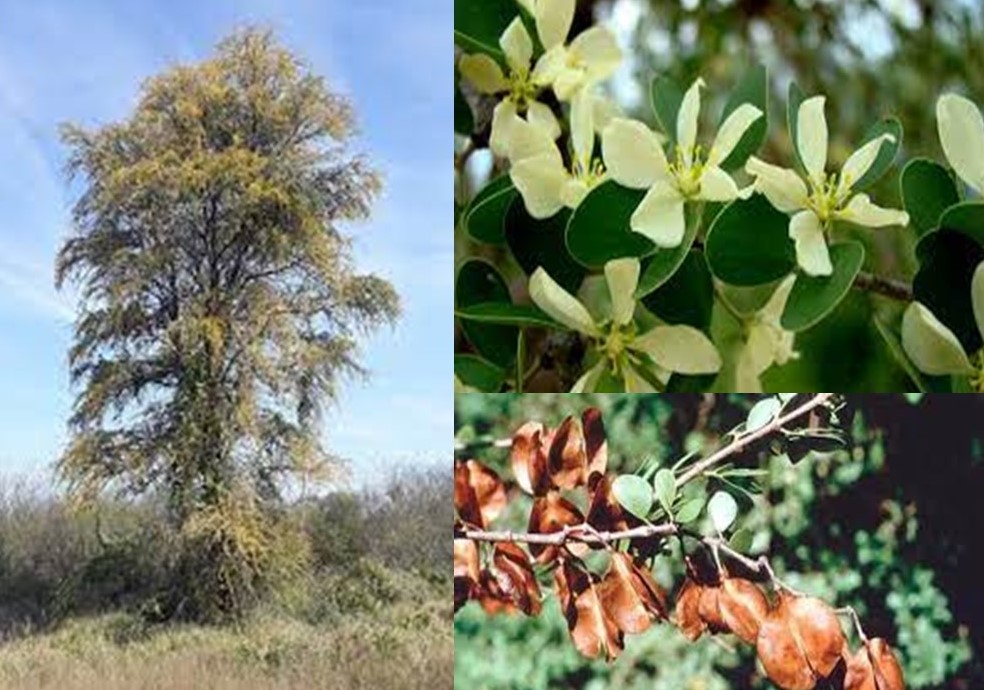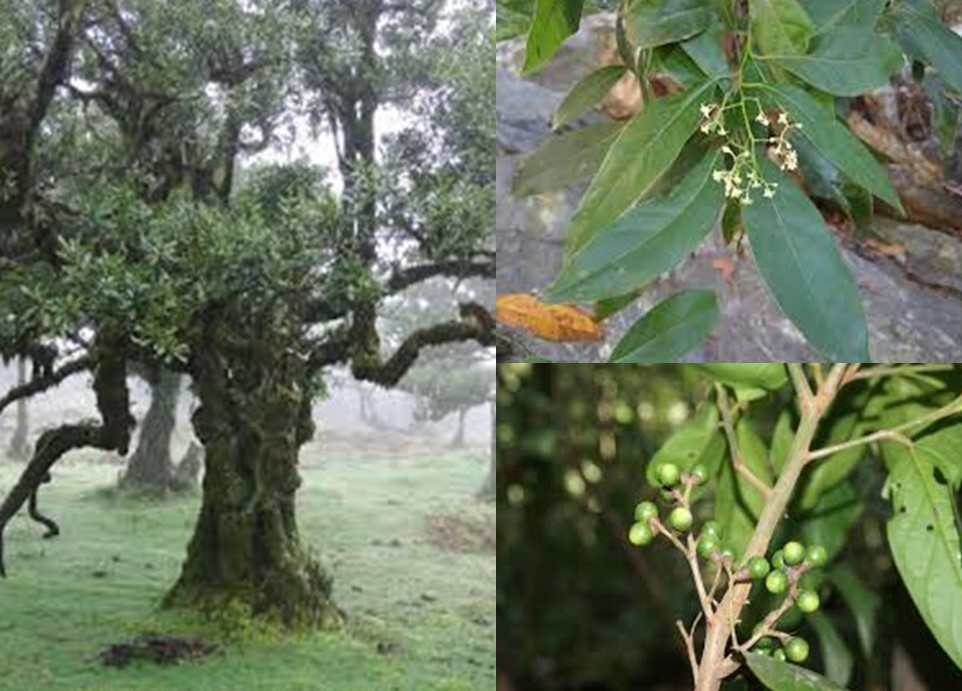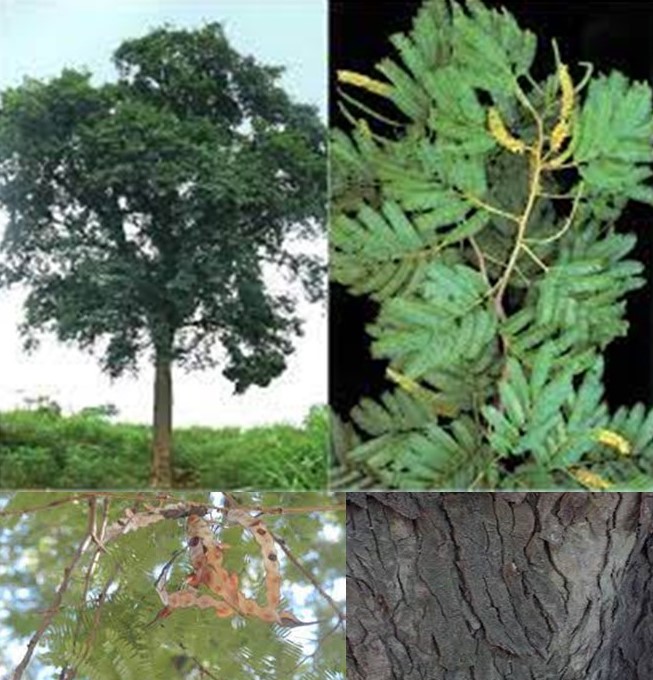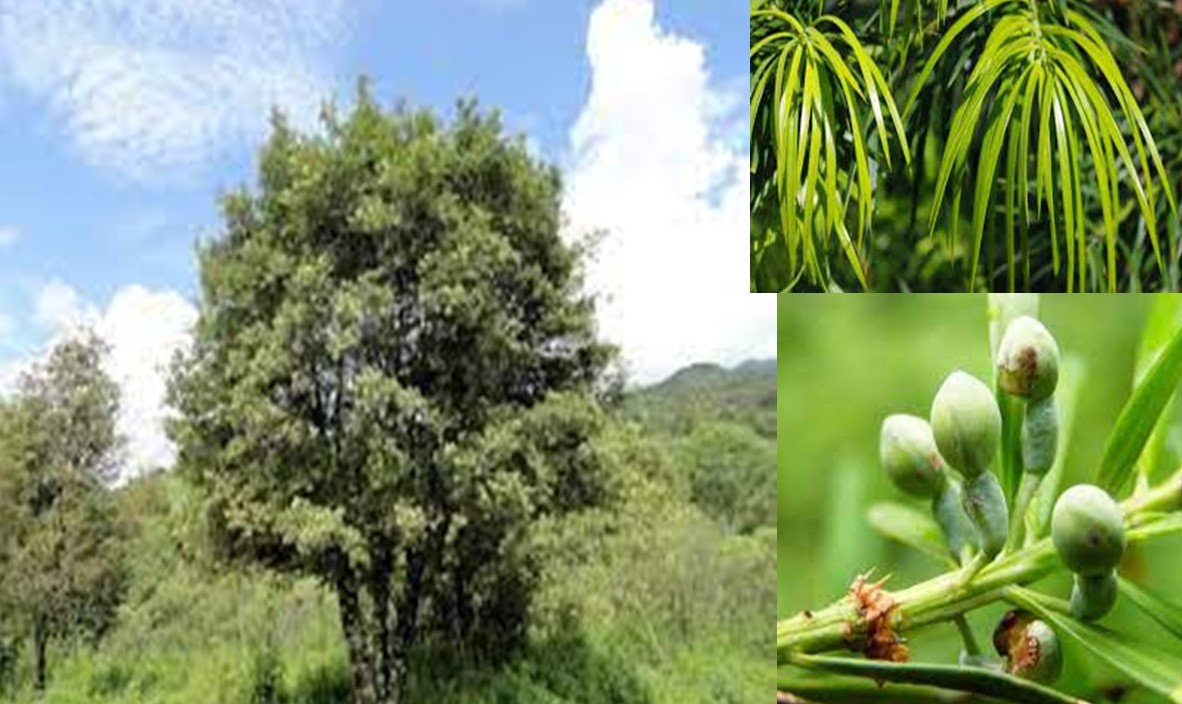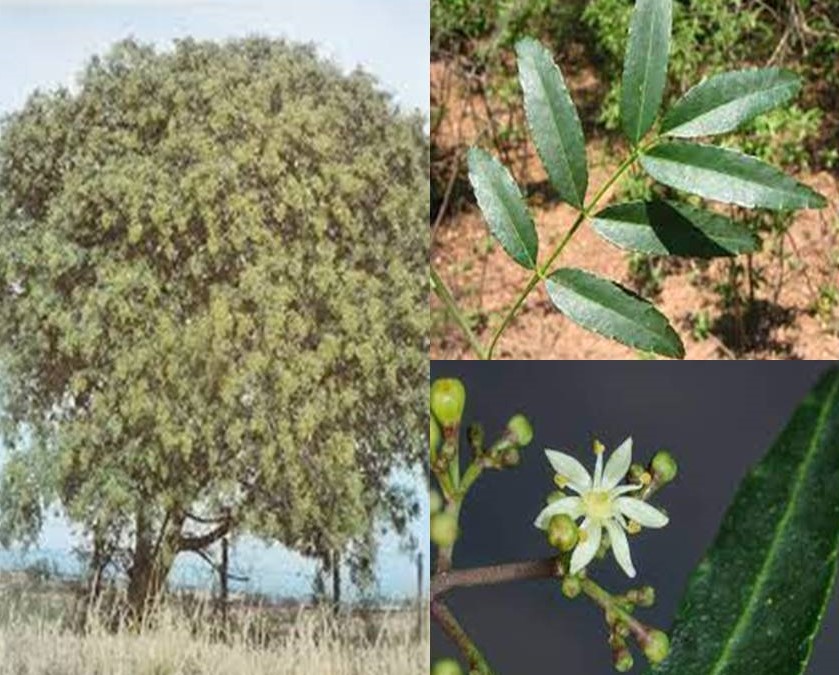let's plant trees together now give now >
Acacia visco Lorentz ex Griseb. ”Acacia visco”
This is a perennial tree that can reach 15 m in height with a trunk of 50 cm in diameter. Its treetop is ample and globose. It has beautiful and fragrant yellow-orange flowers which make it popular for cultivation. Its wood is hard and heavy, often used for cabinet making. Its bark is used to dye wool and fabrics with a brown color. This tree can be found at higher elevations in northern Argentina, Bolivia, and Chile. Besides “Acacia visco” it is also known as, “Viscote” and “Yapan.”
Alnus acuminata Kunth “Aliso del cerro”
This is a deciduous tree species that reaches between 20 – 25 m in height with a trunk of 40 cm in diameter. It has a straight trunk. Its wood is soft and of medium weight, manageable, but not good for exterior use. “Aliso del cerro” is also known as “Aliso criollo” or “Aliso montano.” It grows at a height of 2200 meters above sea level in the Tucumano-Bolivian jungle, or “Yungas” of Bolivia and Argentina, and in the Argentinian provinces of Catamarca, Jujuy, Salta, and Tucumán.
Cedrela fissilis Vell. “Cedro misionero”
This is a tree of great size that can reach between 25 – 35 m in height and 1 – 1.30 m in diameter. It has a straight and long trunk. It is native to Central and South America. In Argentina it grows in the provinces of Misiones, Corrientes, Salta, and Tucumán. Its lightweight wood is widely used in carpentry. Its common name, “Cedro” comes from the fragrance of its wood that resembles the authentic “Cedar” tree (Cedrus). Besides “Cedro misionero” its common names include, “Cedro argentino,” “Cedro blanco,” and “Cedro colorado.”
Ceiba chodatii (Hassl.) Ravenna “Yuchan”
This is a species of deciduous tree native to the tropical and subtropical forests of South America. It can reach 20 m in height with a trunk of 1 m in diameter. When it grows isolated it has a bottle-shaped swollen trunk in which water is stored for the dry season and which makes it very striking, because it also has stingers. Its common name is “Yuchan,” and is also locally known as “Palo borracho de flor amarilla.” It is native to the Bolivian Tucuman jungle from southern Bolivia and northwestern Argentina. In Argentina it grows wild in Jujuy, Salta, Catamarca, Chaco, and Tucumán. It is widely cultivated as ornamental tree in parks and cities.
Gonopterodendron sarmientoi (Lorentz ex Griseb.) A.C. Godoy-Bürki “Palo santo”
This tree reaches between 6 – 15 m in height with a trunk diameter between 20 – 40 cm. Its wood is very heavy and fungus resistant, due to its high content of essential oils and resins which also have industrial uses. “Palo santo” is a tree that inhabits a part of the Gran Chaco area in South America, around the Argentina-Bolivia-Paraguay border.
In Argentina it can be found in the Salta, Formosa, Chaco, and Santiago del Estero provinces. After a long drying process, its wood is used to make quality products like musical instruments. This tree is tied to an indigenous people ritual that says: “When a couple decides to join their destiny; they should secretly plant a “Palo santo” tree, if it grows it means that the relationship will also grow and last.”
Handroanthus impetiginosus (Mart. ex DC.) Mattos
“Lapacho rosado”
This is a large deciduous tree that reaches up to 30 m in height with up to 80 cm in diameter. Its trunk is long and straight. Its bark is brownish gray, tough and hard to peel.
The wood is of a pleasant yellowish color, barely knotted, very tough, heavy and weather resistant. Commonly known as “Lapacho rosado” or “Lapacho tucumano,” this tree is distributed throughout North, Central and South America, from northern Mexico south to northern Argentina in the provinces of Catamarca, Chaco, Jujuy, Salta, and Tucumán. It is widely planted as an ornamental tree in landscaping gardens, city squares and boulevards due to the colorful appearance of its flowers.
Jacaranda mimosifolia D. Don. “Jacaranda”
This is a medium sized tree that can reach 20 m in height. The “Jacaranda” tree also known as “Tarco” is native to Brazil, Paraguay, and northwestern Argentina in the Salta, Jujuy, and Catamarca provinces. It inhabits the Bolivian Tucuman jungle, growing at between 500 and 800 m above sea level. Its bark is thin and gray brown. Its beautiful lilac blooms are soft and delicate. They appear in spring and early summer, and last up to two months. These trees are widely used in urban woodland in many cities.

Juglans australis Griseb. “Nogal criollo”
This is the only native Argentinian walnut tree which doesn’t produce edible nuts. This tree can reach up to 25 m in height with 1 m in diameter in its trunk. Its wood is heavy and hard, widely used to make high quality furniture. The “Nogal criollo,” also known as “Nogal salteño” inhabits the Southern Andean Yungas, on the eastern slopes of the Andes in the Catamarca, Jujuy, Tucumán, and Salta provinces of Argentina. It is a deciduous tree that can be planted in urban areas. It reproduces by seeds..
Myroxylon peruiferum – blanco L.“Quina”
This tree species belongs to the family Fabaceae. It can reach up to 30 m in height and a trunk of up to 1 m in diameter. It is a relative of the Myroxylum balsamun which is native to Peru and famous for its production of the Peruvian bark widely used in medicine and perfumery. Commonly known as “Quina,” “Quina-quina,” and “Incienso colorado” this tree is native to Bolivia and Argentina. In Argentina it is found in the provinces of Jujuy and Salta, in the basal forests growing at 350 m and 900 m above sea level. Its wood is heavy, hard and outdoor weather resistant which makes it valuable for carpentry.
Ocotea porphyria (Griseb.) van der Werff
“Laurel de la falda”
This is a species of evergreen tree that can reach 25 m in height. It has a straight trunk up to 130 cm in diameter. Epiphytic plants grow on its branches giving it singular beauty. Its common names include “Laurel montaño,” “Cascarillo,” “Laurel del cerro” , “Laurel tucumano,” and “Ayuínandí.” It is native to the Bolivian Tucuman jungle from southern Bolivia and northwestern Argentina. It lives in humid montane forests, or Yungas, on the eastern side of the Andes at 1500 m above sea level.
Parapiptadenia excelsa (Griseb.)
Burkart “Horco - Cebil”
This tree is a deciduous species that can be found in the subtropical forest regions from southwest Bolivia to northwestern Argentina. It can reach between 20 – 25 m in height with a diameter between 60 – 80 cm in its trunk, which is straight and long. Its wood is heavy and hard. Its foliage is ornamental, suitable for decorating parks and city squares. Its seeds and bark contain alkaloids. The “Horco – Cebil” is also commonly known as: “Cebil,” “Cebil blanco,” and “Sacha cebil.”
Podocarpus parlatorei
Pilg. “Pino del cerro”.
This tree reaches 10 m in height and up to 60 cm in diameter. It is native to Brazil, Uruguay and the north, northeastern, and central regions of Argentina. In Buenos Aires, the capital and its surroundings, it is known as “Tala.” It is often seen in urban green areas. Its wood is hard and heavy. Its sweet fruits are edible.They are used in traditional medicine for their expectorant and digestive properties. Its bark is used as disinfectant for wounds.
Prosopis kuntzei
Harms. “Itin”
This is a spiny leguminous tree that reaches between 5 – 10 m in height. Its trunk is short and doesn’t get thicker than 25 cm in diameter. Its wood is very heavy, hard, and weather resistant because of its high tannins’ content. Commonly known as “Itin”, these trees are also called; “Palo mataco,” “Jacaranda,” and “Barba de tigre.” They natively inhabit the “Gran Chaco” forests from Bolivia, Paraguay and central and north of Argentina. Its bark is used to tan wool in black tones.
Senna spectabilis
(DC.) H.S. Irwin & Barneby
“Carnaval”
This tree is a deciduous species that can reach up to 10 m in height and between 6 – 10m in diameter. It has a dense, symmetrical and rounded vase-shaped crown. Its wood is soft and lightweight. It is pollinated by bees and has a very fast growth rate. It can be found from Central America and the Caribbean Islands up to the north of Argentina in the provinces of Salta and Jujuy. It is due to its bright yellow flowers that bloom from January to March in the southern hemisphere that its common name is: “Carnaval.”
These trees are often grown as ornamental in front yards, city squares and parks.
Tipuana tipu .
(Benth.) Kuntze “Tipa blanca”
This is a deciduous tree that can reach up to 40 m in height with a trunk of up to 1.5 m in diameter. Commonly known as “Tipa” or “Tipa Blanca” it is a South American native tree that inhabits the Bolivian Tucuman jungle from southern Bolivia and northwestern Argentina. In Argentina it grows in the provinces of Salta, Jujuy, Tucumán, and Catamarca in the montane forests. It has beautiful blooms that appear from October to December. These blooms along with its great size, which gives good shade, make this tree widely cultivated in Argentinian cities as well as in other countries. Its semi-hard and not too heavy wood is suitable for carpentry use. Its bark produces a blood-red resin that is used in traditional medicine.
Zanthoxylum coco
Gillies ex Hook. f. & Arn. “Coco”
This is an evergreen tree native to Argentina and Bolivia where it grows in the wild, mostly in coniferous forests of the low mountain ranges of the western Chaco. It is characteristic of the hill forest of the Sierras Pampeanas. It can reach 12 m in height with a trunk up to 70 cm in diameter. It is commonly known as “Coco,” “Cochuco,” or “Smelly sauco.” Its wood is moderately heavy and appreciated for local uses. Its leaves are used in traditional medicine for their sudorific, diuretic, and stimulating properties. Its tissues possess essential oils. Indigenous people use its bark for tanning textiles in dark colors.
Senna spectabilis
(DC.) H.S. Irwin & Barneby “Carnaval”
This tree is a deciduous species that can reach up to 10 m in height and between 6 – 10m in diameter. It has a dense, symmetrical and rounded vase-shaped crown. Its wood is soft and lightweight. It is pollinated by bees and has a very fast growth rate. It can be found from Central America and the Caribbean Islands up to the north of Argentina in the provinces of Salta and Jujuy. It is due to its bright yellow flowers that bloom from January to March in the southern hemisphere that its common name is: “Carnaval.”
These trees are often grown as ornamental in front yards, city squares and parks.
Tipuana tipu (Benth.) Kuntze “Tipa blanca”.
This is a deciduous tree that can reach up to 40 m in height with a trunk of up to 1.5 m in diameter. Commonly known as “Tipa” or “Tipa Blanca” it is a South American native tree that inhabits the Bolivian Tucuman jungle from southern Bolivia and northwestern
Argentina. In Argentina it grows in the provinces of Salta, Jujuy, Tucumán, and
Catamarca in the montane forests. It has beautiful blooms that appear from October to
December. These blooms along with its great size, which gives good shade, make this tree widely cultivated in Argentinian cities as well as in other countries. Its semi-hard and not too heavy wood is suitable for carpentry use. Its bark produces a blood-red resin that is used in traditional medicine.
Focused on contributing for a better planet
Be part of this movement that promotes the development of the ecosystem and nature by helping us to plant more trees.


